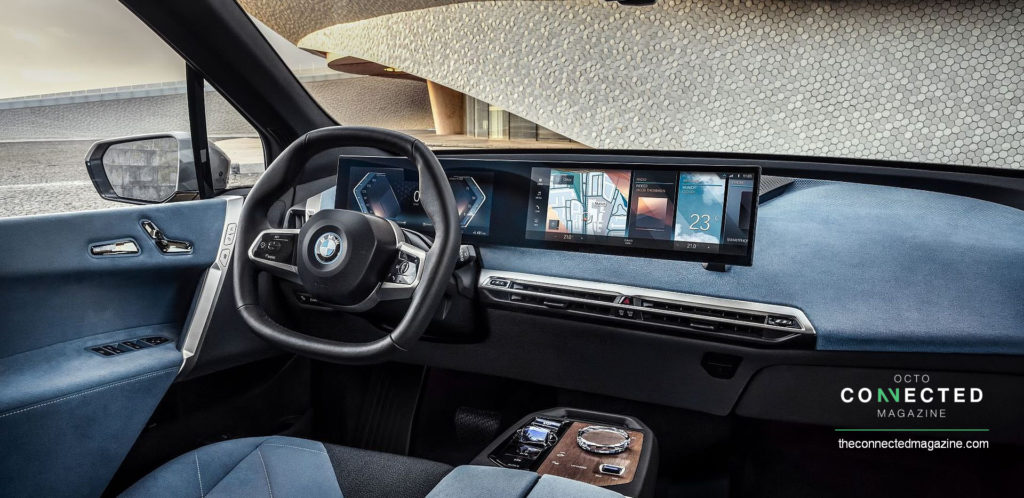
In tomorrow’s vehicles, optional extras don’t need to be ordered together with the car. Neither will they be invoiced entirely, but only insofar as you use them. The repercussions for vehicle pricing, but also remarketing are tantalising.
Standardisation makes things cheaper. The more varieties you want to offer, the more different specifications and sometimes suppliers are involved. There is a reason why premium brands are more expensive – the number of possible equipment combinations is endless because customisation is what the discerning customer wants.
The front seats alone come in different shapes (standard, comfort, sport) and offer a plethora of features depending on which boxes the customer ticks on the option list: heating, ventilation, massage, lumbar support, adjustable side bolsters, manual or electric operation, with or without memory, and so on. Sometimes there are thousands of euros between a standard seat and the top-of-the-range model with all imaginable gadgets.
Only a small percentage of customers will pay the premium for the better seat. In their search for profit maximisation (which often includes cost-cutting) OEMs are now figuring out ways to monetise optional extras differently. It may be economically more interesting for a car manufacturer to order just one seat type from their supplier, which has all the gizmos integrated. Rather than just ‘giving away’ these seats without a premium, OEMs are considering a business model in which the customer can try out all the features for free during three to six months after delivery, after which they can decide to keep one or more and pay for their use on a monthly basis, whereas the others are deactivated through an OTA software update.
Safety, convenience, navigation, telematics
The possibilities seem endless. In fact, it is not always a matter of standardising. In some cases, the hardware has to be provided in any case – it just offers additional monetisation possibilities. Europe mandates the standard installation of AEB with pedestrian recognition, for instance. So OEMs need to install a camera and a radar in every car they sell. OEMs can use these systems to turn a standard cruise control into an adaptive one. Or they can use the camera for features like traffic sign recognition, lane-keep assist, wrong-way warning, et cetera.
Other safety and convenience features that are easy to activate over the air are active lane keeping, high-beam assist (which is already available ‘OaaS style’ in the BMW Store), dynamic LED lighting, hill hold, adaptive dampers, adaptive steering, enhanced audio, active noise cancelling, engine sound enhancement, and so on. OEMs may even go one step further and expand their OaaS offer to electrically foldable mirrors, manual shift mode on an automatic gearbox, a sunroof that actually opens,… the sky(light) is the limit.
Digital services are of course the easiest to activate or deactivate. Think of Spotify, concierge services, parking information, weather forecast, fuel price information, charging station availability, and so on. Manufacturers can just as easily equip every car with a sat nav and only activate it upon demand, thereby offering cloud-based maps, door-to-door navigation, dynamic or habit-based routing, and so on.
The question is whether integrated navigation systems are the dodos of the third decade, as apps like Google Maps and Waze seem to do the job more accurately, dynamically and conveniently. All you need is Apple Carplay or Android Auto to mirror them onto your car’s display.
Finally, OEMs can offer fleet operators the possibility to harvest data directly from their vehicles – no extra hardware is needed, as every car leaves the assembly line connected. In fact, this is already possible today, but privacy-sensitive Europe basically limits the type of data shared with third parties (such as employers) to those that cannot be tied down to a person.
Lump sum versus subscription
There can be yet another interesting approach to this Options-as-a-Service model. Rather than renewing a subscription on a monthly or a yearly basis, the OEM can propose the vehicle owner to pay for the use up front for the entire use cycle of the car in return for a discount. Or it can offer the user a hire-purchase, meaning that after a certain number of months, the option becomes the property of the user.
The consequence of this could be that OEMs will try to sell these options a second time once the vehicle transfers between owners. After all, it’s just a matter of deactivating and reactivating stuff over the air. How will this impact the value of a car when it is remarketed? Will price differences between naked cars and Christmas trees level out?
So long as hardware makes a difference, the probability is quite low. You cannot rent leather, a sports package, a deep black body paint, 19-inch rims, or six cylinders instead of four. But with EVs, you can imagine paying a fee to temporarily unlock the full potential of a motor – or even a battery.
And with autonomous vehicles, it stands to reason that OEMs could offer the option of temporarily activating the auto pilot against a fee, so you can sit back and relax as your car drives you wherever you need to be, while you do whatever you want to do with the time you bought yourself.
Source: fleeteurope